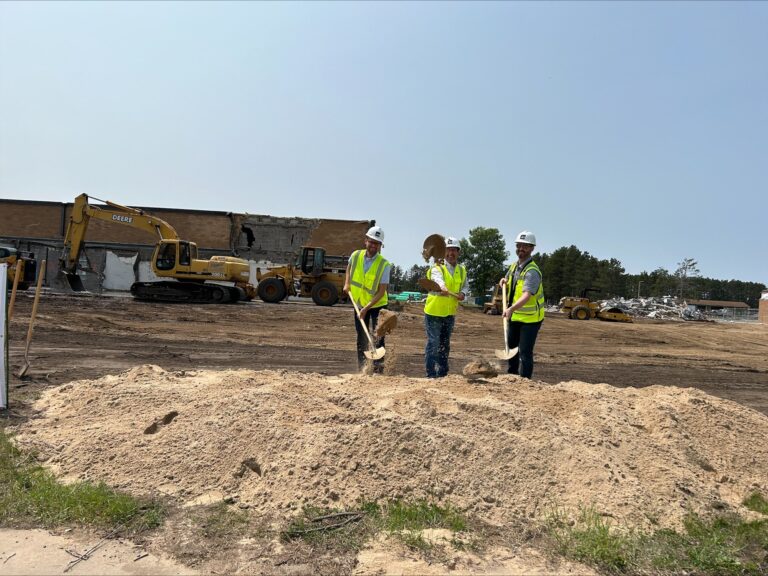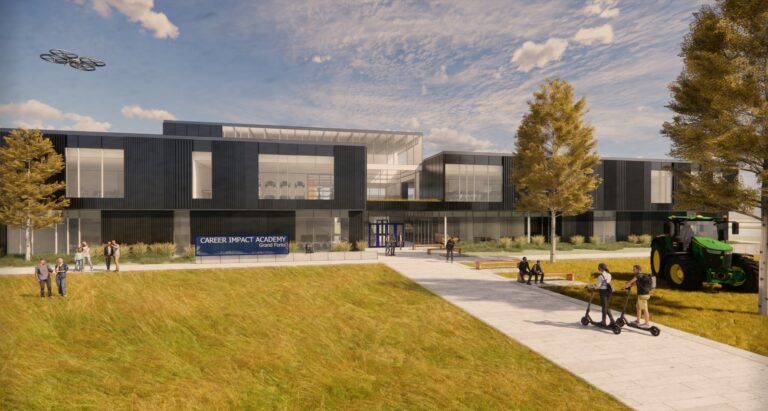As part of its renovations, South Heart Public School received a new vocational agriculture building last year. Since then, it has provided the school the space and technology to expand its vocational programs.
“I think it’s important for the community and the surrounding area that these kids are able to take these courses because there is such a need in this area for, let’s say, welding,” said Scott Jung, secondary principal. “We had a couple of seniors actually before they graduated were hired on as welders, and so right when they graduated, they went right to work because they had the necessary skills. That’s kind of what the career and tech education is pushing for, is kids can come out of high school with the skills necessary to jump right into either a tech school or the workforce.”
Prior to the new building, the “vo ag” workshop was one room. Now it’s a building with five designated areas: classroom, paint and staining room, welding area, woodworking area and greenhouse.
Without the separate areas, students couldn’t have woodworking and welding projects going on at the same time. Now that they have their own designated areas they can, said senior Kyle Kostelecky.
Even though they had just one type of project going at a time, the old room was cramped. Some equipment not in use was pushed against the wall, and gas bottles, now in a storage container outside, were chained to the walls, said Kaitlyn Swann, vo ag instructor.
“It was really crowded,” said senior Natasha Baranko, “so now we have more room for all those tools that we need.”
With more room, the school can loan more equipment from Roughrider Area Career and Technology Center, said Scott Jung, secondary principal. RACTC rotates equipment among 11 schools in the area.
Before, it was a struggle to store the equipment they already had. What wouldn’t fit in closet space or against the wall was taken to the bus barn, said Swann.
In addition to the added space, students now have safety features they didn’t have in the old room. The new building has an eyewash and shower, and both the welding area and painting and staining room have ventilation. In the welding area, students have adjustable snorkels they can move close to their welding piece to suck out the fumes.
“When we had the old shop, if they welded, the whole school knew they welded,” Jung said adding that now “you can hardly smell the welding because of the ventilation system.”
Previously, the only choices they had for fresh air was to open a door or to go outside, said Swann.
“You would kinda have to tailor your lessons for the spring or fall,” she said.
The shop areas have other conveniences, too. Electrical outlets hang from the ceiling on pulleys around the room, so students have access to power wherever they are in the shop. There are air hookups throughout the room as well that students can use to dust off their clothing before they leave for class.
“Everything we have in there now is state of the art,” Jung said. “We’ve had a couple of guys that are in the welding industry say, ‘Wow, I wish we had this set up in our shops.'”
Before the new building, the classroom and the shop were in different areas.
“You had to go up the stairs and down the hall a little bit,” Swann said. “Sometimes that was nerve-wracking because there were times where you had to do shop and kids (were) in the classroom.”
Now the classroom is in the same building, right next door to the shop.
“The classroom is so nice, too, because you do have those windows so that you can look into the shop and see what’s going on,” Swann said. “It’s nice too because I think the kids take pride in it. It’s a safe workplace, knowing everything has a place, whereas before things were kind of stacked on top of each other. .. It’s opened more possibilities, more opportunities, for these guys.”
Jung said he believes the vo ag building was a selling point to the community on the school’s renovations. For many of South Heart’s students, the work they do in vo ag is directly applicable to their lives.
“Most of our kids are farm kids,” Jung said. “When you’re offering classes like livestock production to a kid that’s probably going to take over the ranch someday, those are pretty appealing courses to them.”
Some students even make items they can use on their family’s farm.
Kostelecky’s parents own a farm, and he plans to take it over some day. His current welding project is making a shop press, which bends metal.
“(Welding) is one of those things around the farm that we do a lot of,” he said. “Making your own shop tools, it makes (the class) more valuable.”





